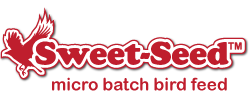7 Simple Steps to a Safer Hummingbird Feeder

A dirty hummingbird feeder poses a grave risk to hungry hummers, but it is easy to not only clean every nectar feeder, but also to minimize the mess that gets these feeders dirty more quickly.
There are several reasons why dirty hummingbird feeders are unwanted in the backyard. Not only is discolored, cloudy nectar less attractive to see, but it is also dangerous to hummingbirds that may become infected by bacteria, mold or fungus from spoiled nectar. Bad nectar can also smell strongly, and strong odors can attract mice, rats, raccoons and other unwelcome wildlife looking for a free drink. A dirty feeder clogs easily, causing damage to feeding ports and preventing hummingbirds from sipping, and as drips accumulate on the edge of a hummingbird feeder, insects can swarm, which will also discourage birds from feeding.
Fortunately, it's easy to clean hummingbird feeders and keep them safe for nectar-loving hummers.
7 Simple Steps to Clean Hummingbird Feeders
While different hummingbird feeders have slightly different designs and constructions, the basic steps for cleaning them are the same.
- Dispose of Remaining Nectar : First, empty any remaining nectar from the feeder's reservoir. To avoid attracting pests or insects to the feeding area, dump nectar well away from where the feeder hangs or dispose of it inside down a suitable drain. Nectar should never be reused.
- Disassemble the Feeder: Carefully take the feeder apart, unscrewing the top or base and removing any accent pieces, perches or insect guards. By separating the feeder into its component parts, it will be easier to clean it thoroughly without leaving dirt or spoiled nectar in small spaces or grooves.
- Soak the Feeder: Soak all the feeder parts in plain hot water for several minutes. This will loosen any tight connections as well as dissolve any crystallized, caked on sugar. This is a good time to refill other feeders or wipe down the poles and hooks where hummingbird feeders are placed.
- Scrub the Feeder: Use a weak cleaning solution to scrub the feeder inside and out – a small squirt of dish soap into the hot water or a little bit of bleach is a good option to clean and sterilize the feeder. Use small brushes or pipe cleaners to clean feeding ports and larger bottle brushes to clean the feeder reservoir.
- Rinse Thoroughly: Rinse the feeder with clean running water for a minute or two to remove all chemical residue and be sure there is no remaining debris or buildup. Make the sure water flows freely through all the feeding ports.
- Dry the Feeder : Dry the feeder thoroughly so nectar will not be accidentally diluted if a wet feeder is refilled. Air drying works well to be sure all small parts are completely dry, and drying the feeder in the sun will break down any remaining chemical residue to keep the feeder safe.
- Reassemble and Refill: Once the feeder is dry, reassemble it firmly, taking care that all the parts fit together properly without damage or blocking feeding ports. Once the feeder is back together, refill it and get it back out for hungry hummers to enjoy!
Minimizing Messy Hummingbird Feeders
It can be frustrating to clean a hummingbird feeder properly, only to have it get dirty again in just a few days. While it is important to clean feeders regularly to prevent any contamination that could harm hummingbirds, there are easy ways to keep feeders tidy just a little longer.
- Minimize Leaks: A leaky feeder will get dirty much faster as sugar crystallizes on the feeder's surface and feeding ports clog. Position a feeder away from strong winds or busy pathways where it can be tipped more easily, and be sure it is securely hung so there is no risk of falling.
- Choose Smaller Feeders: Using smaller feeders can help reduce mess and waste, since the feeders will be emptied faster and can be cleaned each time they are refilled. Smaller feeders are often simpler designs that are easier to clean, and because they have a smaller capacity, there is less nectar to go bad.
- Use Insect Guards: Opting for feeder designs with built-in bee guards and ant moats can help reduce mess and contamination from insects. Even if feeders don't have these features, external ant moats and other accessories can be used.
By cleaning hummingbird feeders properly and taking steps to keep them clean, you can offer every hummingbird in your backyard a safe, delicious sip.
